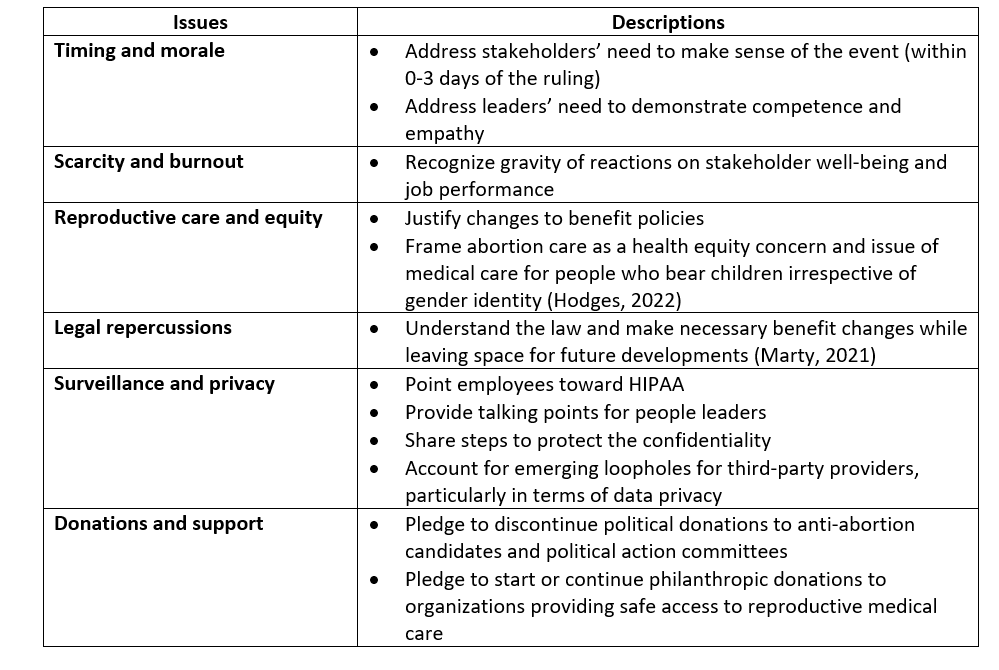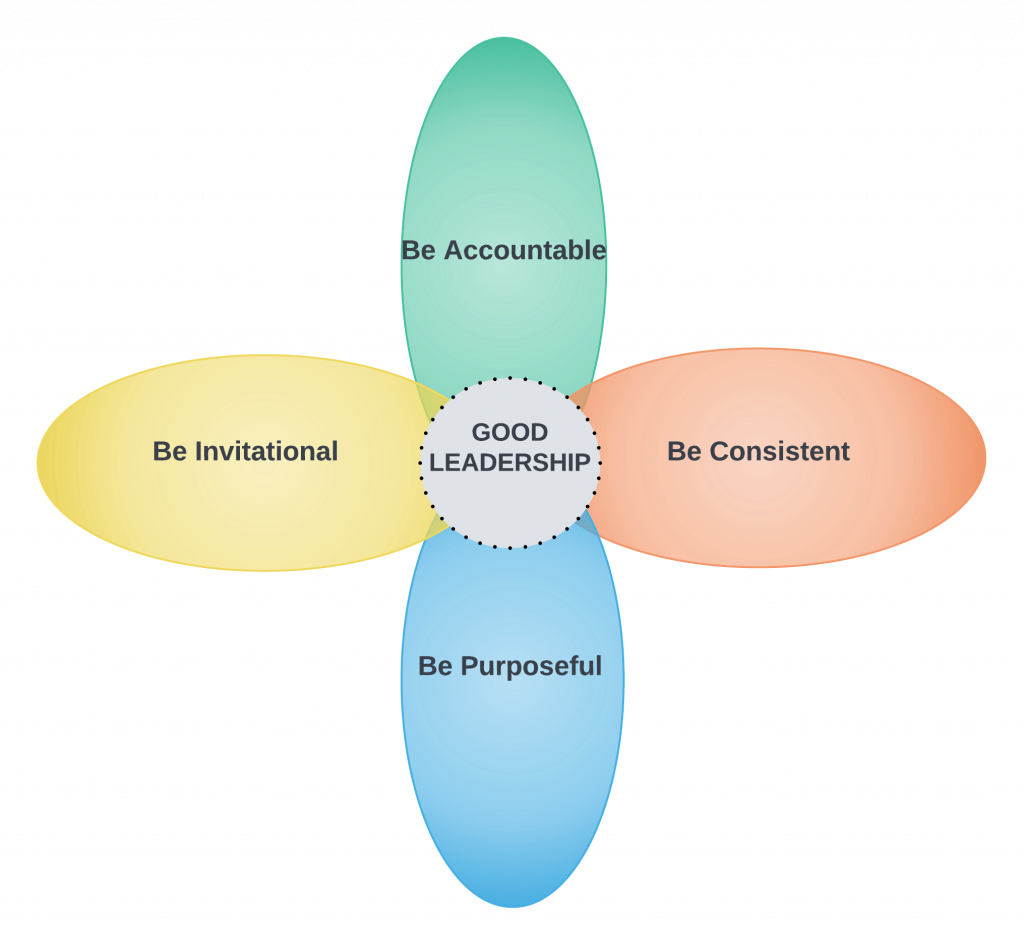On June 24, 2022, the United States woke up to the news of its Supreme Court’s decision in Dobbs v. Jackson Women’s Health Organization, overturning federal abortion protection legalized by Roe v. Wade in 1973. The decision, leaving abortion access and legal decisions to the states, sparked immediate protests and student and employee walkouts.i
The nation’s collective witnessing of this decision brought an array of collective reactions, including anger, disbelief, fear, disgust, sadness, relief, and perplexity. Now, collective reactions are global. The European Union’s parliament condemned the decision and called for safeguards to be included in the EU’s fundamental rights charter.ii At the same time, a UK government-sponsored multinational statement committing to the fundamental rights of women and girls was amended to remove references to “sexual and reproductive health and rights” and “bodily autonomy.”iii A total of 6 countries signed the amended statement. These local and global reactions resurfaced 21st century leadership’s most pressing challenge:
How do we lead effectively and equitably?
Leaders first encountered this challenge in public calls for accountability after George Floyd’s murder in 2020.iv Many leaders responded with shifts in organizational strategy and communication aimed directly at creating equitable, diverse, and inclusive cultures. We shared our 3-stage, strategic communication model for leaders doing organizational EDI work in our recent research insights paper¹, Cosmetic, Conversation or Commitment?: A Study of EDI Corporate Messages, Motives, and Metrics After George Floyd’s Murder. Our research reveals that, in 2020, most organizations were working in the cosmetic stage, generating diverse representational changes among employees and leaders to keep pace with current demographic changes. Cosmetic EDI work makes diversity visible and valuable. Cosmetic approaches to EDI work present equity, diversity, and inclusion as “must see” achievements that make sense for organizations and stakeholders.
Two years later, however, cosmetic EDI alone is not enough. Today’s stakeholders expect conversation, commitment, and collective action.v They want to work for companies that take a stand and recognize the role of EDI in social impact, corporate reputation, recruitment, and morale.vi In response, CEOs are owning their responsibility and using their platform for engaging with complex social issues: including systemic oppression, gun violence,vii geopolitical conflict, climate change, public health emergencies, and now, comprehensive reproductive medical care.viii
Complex social issues – like equitable access to comprehensive reproductive medical care – are prompting leaders to determine how and when to engage in conversations about EDI that result in commitment. For example, as leaders read the leaked Supreme Court majority opinion that overturned Roe v. Wade on May 2, 2022, they talked with employees across their organizations, including representatives from Employee Resource Groups, Human Resources, EDI, Communication, and Legal.ix Leaders learned that state-level abortion restrictions will cost those economies $105 billion a year in reduced labor force participation, reduced earnings, increased turnover, and time off among prime working-age people who can bear children.x Leaders also examined how state-level abortion restrictions would impact organizational equity; in terms of labor force participation, educational achievement, career paths, well-being, gender affirmation, and material life outcomes for their employees and shareholders.xi Leaders listened to stories of pain, struggle, and fear. Data gathered in conversation determined the agenda for influencing organizational policy and culture.
How do committed EDI statements express effective leadership?
Committed EDI work emerges through conversations and is represented clearly in communication that advocates and acts. Leaders who advocate are leaders who care. Leaders who act are accountable leaders. Based on our textual analysis using Topic Modeling,² public statements released in response to Dobbs v. Jackson Women’s Health Organization and reflect EDI commitment addressed some or all of the following issues:

Post-Roe statements – outlining updated health care and travel policies, legal indemnity, political intervention, and philanthropic outreach – reflect growing commitment among senior leadership. Growing commitment is felt as EDI and business strategies align to produce strong business results and ensure broad social impact. These first important steps are laudable because they show EDI as a well-integrated business imperative that drives results, such as increased stock price, brand valuation, and organizational morale.xii
In addition, Post-Roe corporate statements use the same EDI strategies post-Floyd statements used.xiii These EDI strategies, shown in Figure 1, are:
 Figure 1: EDI Strategies Mentions in Post-Roe Vs Post Floyd
Figure 1: EDI Strategies Mentions in Post-Roe Vs Post Floyd
Unlike the Post-Floyd statements, many post-Roe statements were not shared publicly. Rather, they were circulated internally with employees. Based on the publicly available statements in both cases, Post-Roe statements demonstrate an evolving commitment to EDI compared to statements released in response to George Floyd’s murder (see figure above).
While under 10% of post-Floyd statements examined included all 7 EDI strategies, 80% of post-Roe statements examined included all 7 EDI Strategies.
Further, the strategy of Performative Allyship and Bridging Communities (going through the motions, sharing the burden with outgroups) appears least often in post-Roe statements. This trend suggests senior leaders and the organizations they lead are working to sustain EDI conversations through programs and campaigns that lead to commitment. Commitment is demonstrated three ways. First, in clear, relevant messages that resonate with candidates, employees, shareholders, and clients. Second, in internal and external policy changes that can be measured over time. Third, acknowledgement that issues of racial and gender equity are never settled but require ongoing commitment and collective action both inside and outside the organization.
Take, as examples, the following statement excerpts:

What can leaders do now?
To succeed in this post-Roe world, learning to sustain EDI commitment is a core leadership skill. Leaders must be willing to make difficult, high-stakes decisions about complex social issues and prepared to make a high impact on the organizations and communities they serve. Such willingness and preparation are hallmarks of good leadership, which promotes social good through sustained EDI commitment. Good leadership aims to make work safer, smarter, more focused and increase the capacity for bigger, broader, and more sustained impact.

To demonstrate good leadership, leaders at all leadership levels must:
Be invitational. Good leaders invite stakeholders to share perspectives that contribute to messaging instead of writing statements according to a template. When good leaders make invitations, they are recognizing needs: (1) to gain understanding from a variety of stakeholders to inform messaging, policy, and advocacy; and, (2) to create organizational cultures and relationships based on equity, value, and empowerment.xiv Being invitational aligns with the “conversation” approach in the 3Cs framework in which this research is grounded.
Be accountable. Remember, 60% of respondents expect CEOs to speak publicly about controversial social and political issues they care about.xv That means sometimes good leaders’ positions will make people angry.xvi Good leaders encourage feedback from multiple perspectives as part of the process. Leaders can harness the opportunity to promote data education and knowledge transfer in responses to feedback.xvii In doing so, good leaders demonstrate accountability and show they understand the risks inherent in good leadership. Being accountable aligns with the “commitment” approach in the 3Cs framework.
Be consistent. Good leadership is consistent because it establishes direction, alignment, and commitment.xviii Good leadership is demonstrated in Post-Roe statements that align with post-Floyd statements in answering calls: (1) For stakeholder well-being and sustained social cohesion; (2) to promote equitable life chances; and, (3) to commit to sustained EDI effort by addressing global issues of surveillance and gender affirmation. Good leadership has cumulative impact because complex social issues are not going anywhere. Good leaders will intentionally reference prior statements, highlight the through lines across statements and commitments, and follow up on prior commitments.
Be purposeful. Leaders are good when they both remind stakeholders about the organization’s purpose and values and talk about what individuals within the organization or community have collectively witnessed. Sincere, long-term, action-oriented communication demonstrates commitment when it aligns with organizational values, centers equity, has a positive impact on internal employee engagement, is relevant to clients, and clearly states purpose. Research reveals that a clear purpose is a cultural and financial resource as it helps leaders identify, respond to, and manage complex social issues for their stakeholders.xix
We have some clear examples of good leadership in the wake of Roe v. Wade. We need more. Making use of good leadership is what drives organizations into the future. With an in-depth understanding of stakeholder concerns and accountability, good leaders can be consistent and purposeful. Then, they act and advocate because they can determine where their organizations should lead and where they should provide support. To lead successfully in the Post-Roe world, leaders have to go beyond their comfort zones, work through awkward silences, fear, and pain points, and communicate boldly and equitably.
i Jackson, A. & Alvarado, C. (2022, July 26). Michigan medical students walk out of induction ceremony to protest keynote speaker with anti-abortion views. CNN. https://www.cnn.com/2022/07/26/us/medical-student-abortion-protest-university-of-michigan/index.html; Orland, K. (2022, July 22). We’re outta here: Activision employees walk off the job seeking abortion, LGBTQ support. ArsTechnica. https://arstechnica.com/gaming/2022/07/activision-employees-walk-off-the-job-seeking-abortion-lgbtq-support/
ii European Parliament. (2022, July 7). Include the right to abortion in EU charter of fundamental rights, demand MEPs. https://www.europarl.europa.eu/news/en/press-room/20220701IPR34349/include-the-right-to-abortion-in-eu-charter-of-fundamental-rights-demand-meps
iii Gov.UK. (2022, July 7). Statement on freedom of religion or belief and gender equality. https://www.gov.uk/government/publications/freedom-of-religion-or-belief-and-gender-equality-statement-at-the-international-ministerial-conference-2022/statement-on-freedom-of-religion-or-belief-and-gender-equality
iv Golding, S. (2020, May 28). Maintaining professionalism in the age of Black death is… a lot. Medium. https://shenequagolding.medium.com/ maintaining-professionalism-in-the-age-of-black-death-is-a-lot-5eaec5e17585
v LeanIn.Org. (2022). Research: Abortion rights are a critical workplace issue. https://leanin.org/research/abortion-access-workplace-issue#
vi Miller, J. (2021, February 18). For younger job seekers diversity and inclusion in the workplace aren’t a preference. They’re a requirement. Washington Post. https://www.washingtonpost.com/business/2021/02/18/millennial-genz-workplace-diversity-equity-inclusion/
vii Leslie, J. (2022). Leading out of a deadly trend. Center for Creative Leadership https://cclinnovation.org/news-posts/leading-out-of-a-deadly-trend/
viii Cooke, F. Mulgal, B. & Mcneice, D. (2022). The future of corporate activism. USC Annenberg Center for Public Relations. https://annenberg.usc.edu/research/center-public-relations/global-communication-report
ix Gerstein, J. & Ward, D. (2022, May 3). Supreme Court has voted to overturn abortion rights, draft opinion shows. Politico. https://www.politico.com/news/2022/05/02/supreme-court-abortion-draft-opinion-00029473
x Institute for Women’s Policy Research (2022). The costs of reproductive health restrictions. https://iwpr.org/costs-of-reproductive-health-restrictions/
xi Foster, D. G., (2020). The turnaway study: Ten years, a thousand women, and the consequences of having—or being denied—an abortion. Scribner Books.
xii Cooke, F. Mulgal, B. & Mcneice, D. (2022). The future of corporate activism. USC Annenberg Center for Public Relations. https://annenberg.usc.edu/research/center-public-relations/global-communication-report
xiii Dawkins, M. A. & Balakrishnan, R. (2022). Cosmetic, conversation, or commitment: A study of EDI messages, motives, and metrics after George Floyd’s murder. Center for Creative Leadership. https://cclinnovation.org/wp-content/uploads/2022/05/cosmetic-conversation-or-commitment.pdf
xiv Foss, S. J. & Griffin, C. L. (1995). Beyond persuasion: A proposal for an invitational rhetoric. Communication Monographs 62(1): 2-18.
xv Edelman Trust (2022). 2022 Edelman trust barometer. https://www.edelman.com/sites/g/files/aatuss191/files/2022-01/2022%20Edelman%20Trust%20Barometer%20Global%20Report_Final.pdf
xvi Burbano, V. C. (2021). The demotivating effects for communicating a social-political stance: Field experimental evidence for an online labor market platform. Management Science 67(2): 1004-1025.
xvii D’Ignazio, C. & Klein, L. F. (2021). Data feminism. The MIT Press.
xviii McCauley, C. (2014). Making leadership happen. Center for Creative Leadership. https://cclinnovation.org/wp-content/uploads/2020/02/making-leadership-happen.pdf?webSyncID=ee8c4087-ee02-c893-0aaa-b4463dc185d2&sessionGUID=e2a97673-237a-11a3-74b2-9ee0a2dc37c9
xix Porter Novelli (2021). Purpose Perception: 2021 Porter Novelli implicit association study.
https://www.porternovelli.com/wp-content/uploads/2021/02/Porter-Novelli-Purpose-Perception-Implicit-Association-Study.pdf
¹ The Cosmetic, Conversation, or Commitment? research insights paper is a recent work by a CCL team of women of color, based on corporate statement analysis in response to George Floyd’s murder in 2020 from Fortune 100 and CEO Action Group Organizations.
² Topic Modeling is an AI-based text analysis algorithm to detect abstract topics in a huge collection of documents. The topic model that this work is based upon identified seven EDI strategies, which correspond to varying levels of cosmetic, conversation, commitment from organizations.




